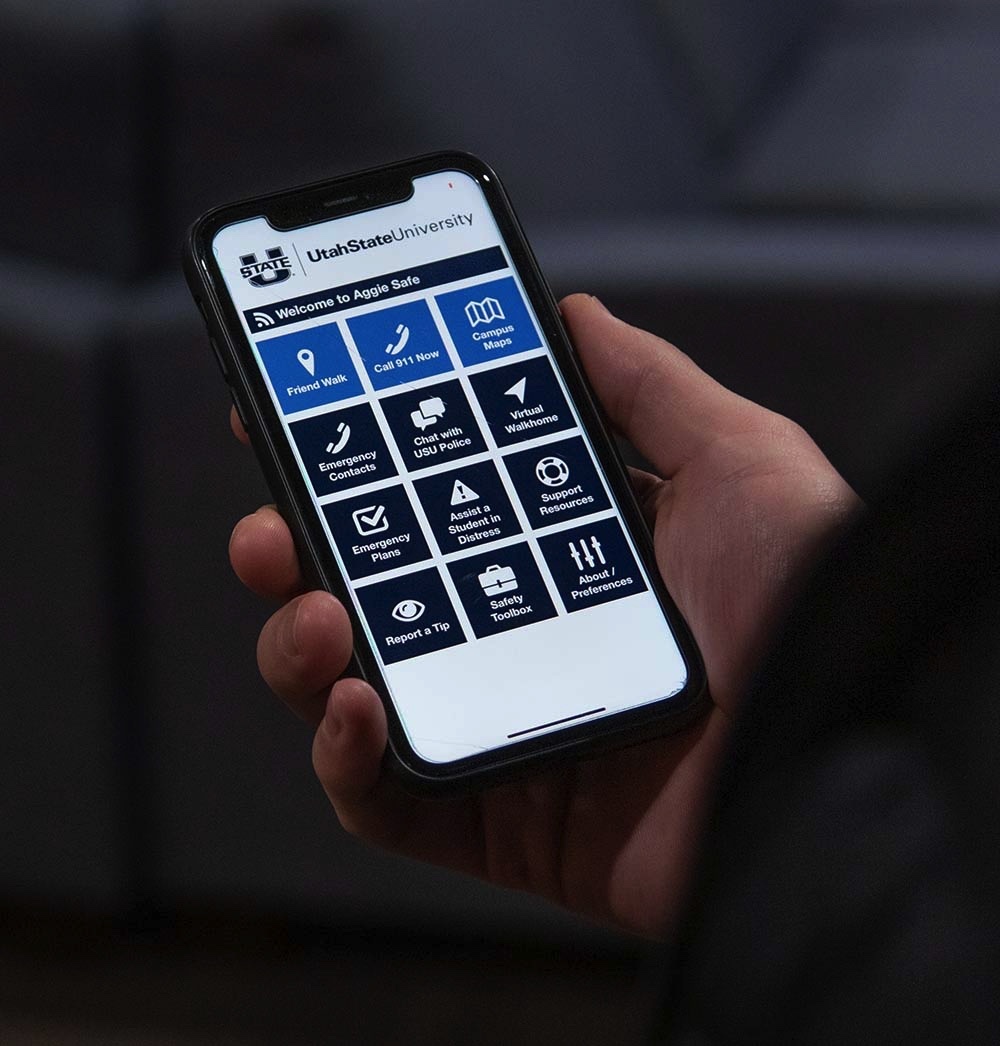USU sexual misconduct survey released
Last week, Utah State University released its latest sexual misconduct student survey.
A Department of Justice review of USU sexual misconduct prevention measures began in 2017 after reported internal failures in the handling of sexual misconduct cases.
As part of this review process and agreement, the school has conducted biannual surveys to report on internal performance.
“The student sexual misconduct survey report provides critical information for our university in addressing these issues in our campus communities,” said Amanda DeRito, the associate vice president for strategic communications at USU.
The survey measures several factors related to student understanding of sexual misconduct and prevention measures.
One statistic in last year’s survey was that 74% of students would feel comfortable reporting sexual misconduct to the school’s Office of Equity.
Despite a large growth and culture-shift in how sexual misconduct is addressed at USU, however, many students — such as Heather Hopkins — aren’t clear on the resources available.
“While I would be 100 percent willing to report or help a friend with the process, I don’t know how the process of reporting works, even though the information has been given to me,” Hopkins said. “The information is out there, but it would be better if it was more consumable and memorable.”
According to the school’s action timeline, USU has significantly bolstered its sexual misconduct prevention efforts since 2016. The university has invested thousands of dollars in such programs and has trained more than 50,000 faculty and students in sexual misconduct prevention and upstanding measures.
Students can resolve issues of misconduct at the Sexual Assault and Anti-Violence Information Office, or SAVVI. The office specializes in not only advocacy but being a confidential body in which students can receive trauma-focused therapy to assist with their recovery.
“Advocacy services are unique to our office and they make such a difference in a survivor’s journey because of the fact that they are there to listen and empathize and support in the way that a friend would,” said Felicia Gallegos, the SAVVI outreach and prevention coordinator.
But advocacy is just part of SAVVI’s role in handling cases of sexual misconduct. The office can help a student receive a sexual assault forensics exam, STI testing and scheduling appointments with physicians, among other measures. The office said the advocates and therapists at the office are professionals and have received extensive training on all the options available.
For most students, the next step is the Office of Equity.
Similar to SAVVI, the Office of Equity offers supportive measures which help make academic accommodations for individuals to continue to access their education despite what has happened to them.
Such supportive measures can include no-contact orders, assistance with class rescheduling and ensuring continued eligibility for financial aid, according to the Office of Equity’s website.
The Office of Equity is also the first reporting and investigative body a student is likely to encounter if such a process is desired.
Even though an investigation is limited to university action and not criminal proceedings, it’s still a resource that can help students navigate the channel of reporting.
The Office of Equity offers two such methods of investigation. The first method is instigated by the student who brings up their case to the office, which then acts as neutral fact finders.
According to Hilary Renshaw, the Title IX coordinator, they gather evidence to then present to a hearing panel that determines if there’s a policy violation. Such policy violations, if discovered, can result in sanctions and other punitive actions from the school.
In the event a student’s report of sexual misconduct is more immediate and could indicate a substantial risk to physical health or safety, the school has obligations to take immediate action.
“In that case, even if the individual doesn’t participate, we’re still required to potentially investigate it and move forward because of the safety risks that may be present,” Renshaw said.
In the situation a student wishes to bring their case of sexual misconduct to a criminal proceeding, external resources must be used, such as local police or the USU Police Department.
Outside of the investigative process, however, USU police also offer other means of prevention and training to help strengthen students’ abilities to seek help or stop sexual misconduct.
Beyond typical safety measures such as patrolling and responding to 911 calls from campus, USU police also offers a Rape Aggression Defense, or RAD, class. Taught to USU students for an elective physical education credit, the class offers instructional methods of rape prevention and a practical portion as well.
“We really want to let these students know that, ‘Hey, you can hit harder than you think you can,’” said Captain Kent Harris, the interim USU police chief.
RAD also takes its students to the gym to cover different strike and escape methods against officers posed as attackers in different practice scenarios.
“I’ve seen some of these students hit some of the officers and the officer has to take a step back and kind of gather themselves,” Harris said. “The look on the student’s face is like, ‘Wow. I’m stronger than I thought I was.’ It’s terrific to see and we love offering this course.”
USU police also takes an active role in helping survivors of sexual harassment and assault seek assistance with their cases. In early 2020, after USU formally signed an agreement with the DOJ regarding implementation of sexual misconduct prevention measures and the university’s police department hired additional staff.
This new staff, including advocates and trauma-informed investigators, aim to “improve services for survivors of sexual violence who report to USU Police,” according to SAVVI’s website.
These employees are specifically tasked with providing special assistance and education on the various processes offered by the school for survivors of sexual violence.
For more information on USU’s safety measures specific to sexual misconduct, you can visit usu.edu/campus-life/safety.
-Michael.Popa@usu.edu

